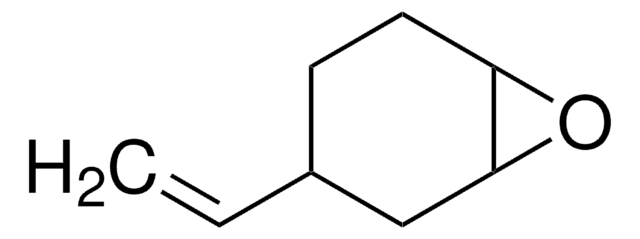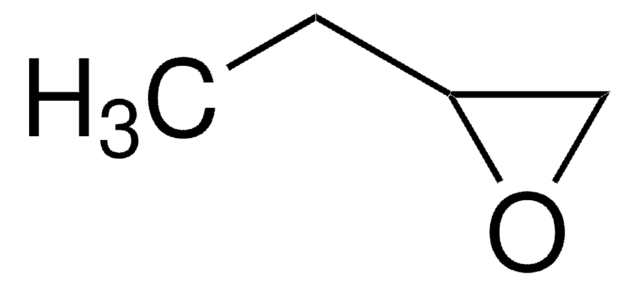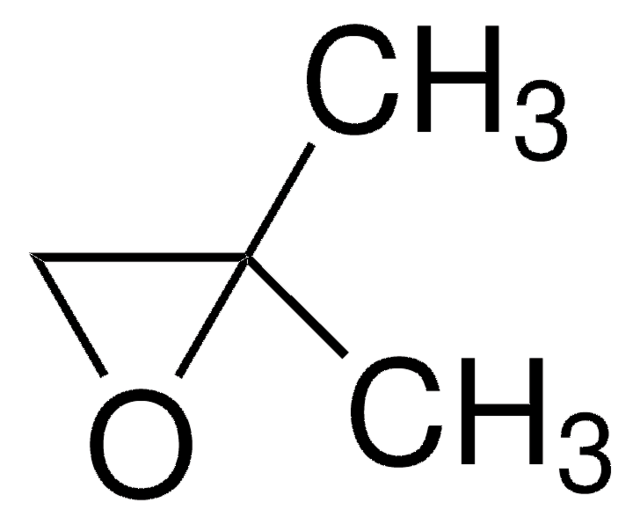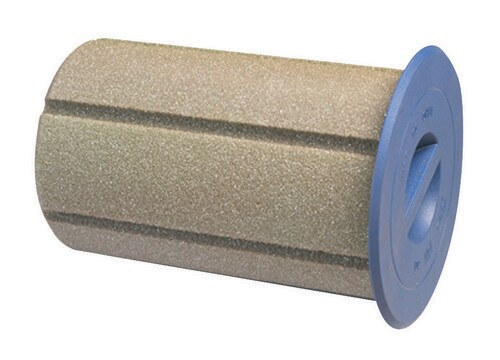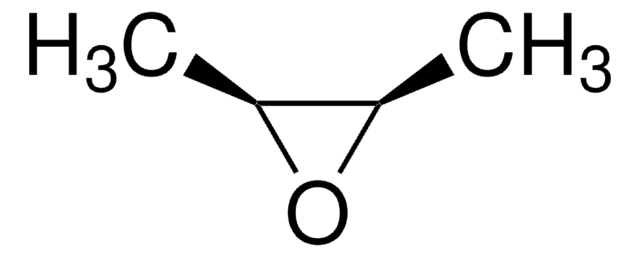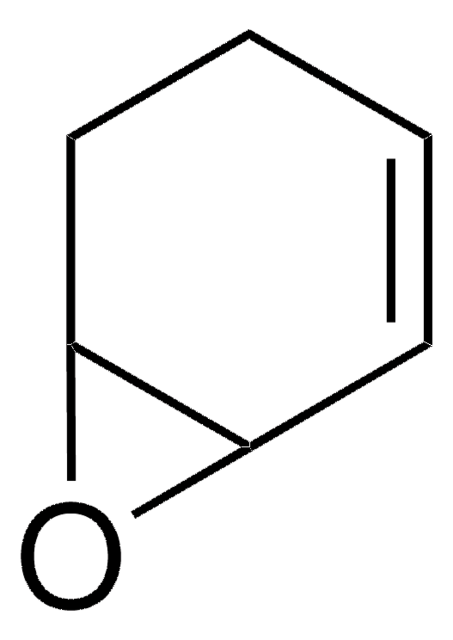127574
3,4-Epoxy-1-butene
98%
Sinónimos:
2-Vinyloxirane, 3,4-Epoxy-1-butene, Butadiene monoxide
About This Item
Productos recomendados
Nivel de calidad
Ensayo
98%
Formulario
liquid
índice de refracción
n20/D 1.417 (lit.)
bp
65-66 °C (lit.)
densidad
0.87 g/mL at 25 °C (lit.)
temp. de almacenamiento
2-8°C
cadena SMILES
C=CC1CO1
InChI
1S/C4H6O/c1-2-4-3-5-4/h2,4H,1,3H2
Clave InChI
GXBYFVGCMPJVJX-UHFFFAOYSA-N
¿Está buscando productos similares? Visita Guía de comparación de productos
Categorías relacionadas
Para utilizar con
Palabra de señalización
Danger
Frases de peligro
Consejos de prudencia
Clasificaciones de peligro
Acute Tox. 4 Oral - Eye Irrit. 2 - Flam. Liq. 2
Código de clase de almacenamiento
3 - Flammable liquids
Clase de riesgo para el agua (WGK)
WGK 3
Punto de inflamabilidad (°F)
-58.0 °F - closed cup
Punto de inflamabilidad (°C)
-50 °C - closed cup
Equipo de protección personal
Eyeshields, Faceshields, Gloves, type ABEK (EN14387) respirator filter
Elija entre una de las versiones más recientes:
¿Ya tiene este producto?
Encuentre la documentación para los productos que ha comprado recientemente en la Biblioteca de documentos.
Los clientes también vieron
Global Trade Item Number
| Número de referencia del producto (SKU) | GTIN |
|---|---|
| 127574-5G | 4061838724946 |
| 127574-10G | |
| 127574-1G | 4061837750441 |
Nuestro equipo de científicos tiene experiencia en todas las áreas de investigación: Ciencias de la vida, Ciencia de los materiales, Síntesis química, Cromatografía, Analítica y muchas otras.
Póngase en contacto con el Servicio técnico